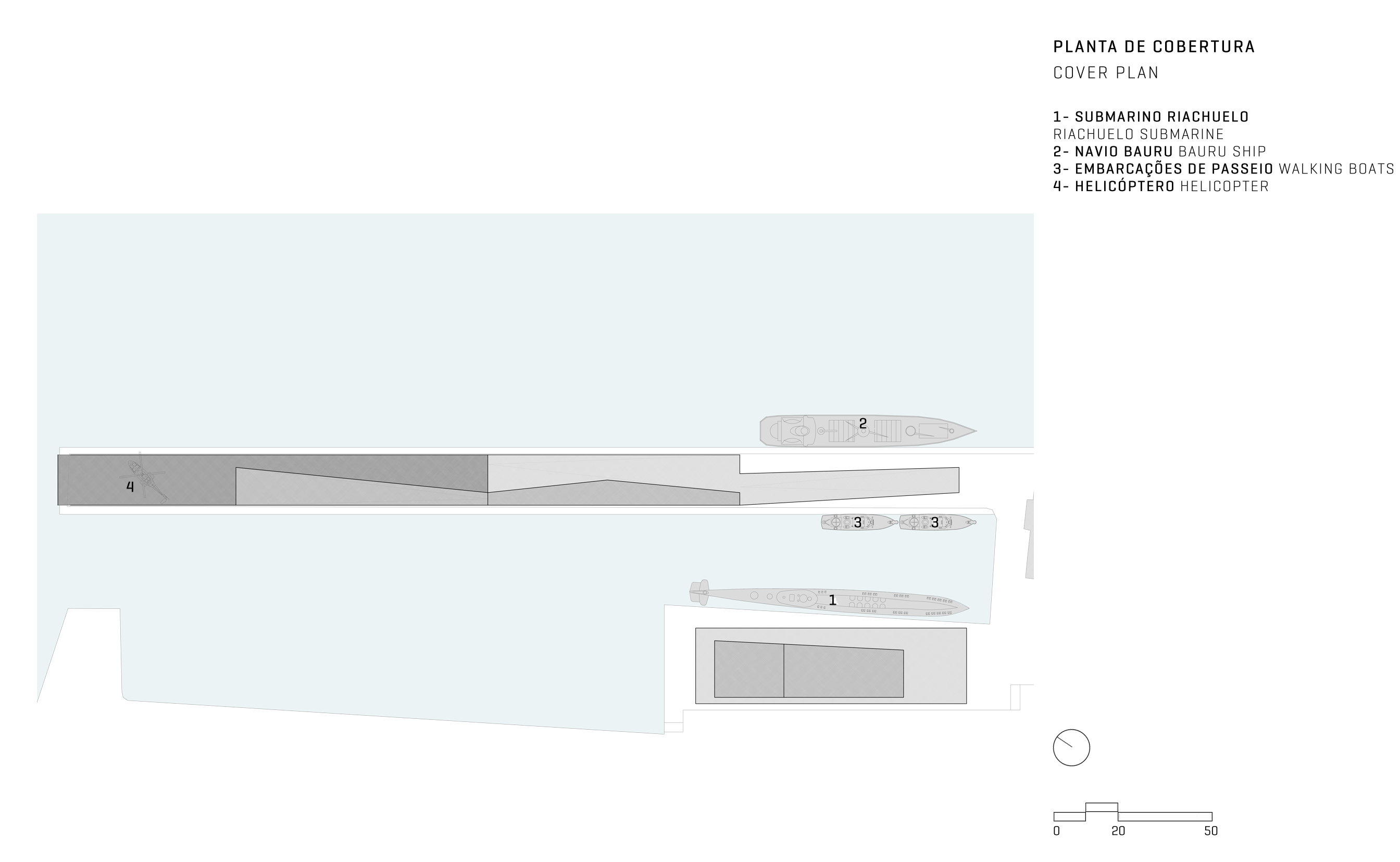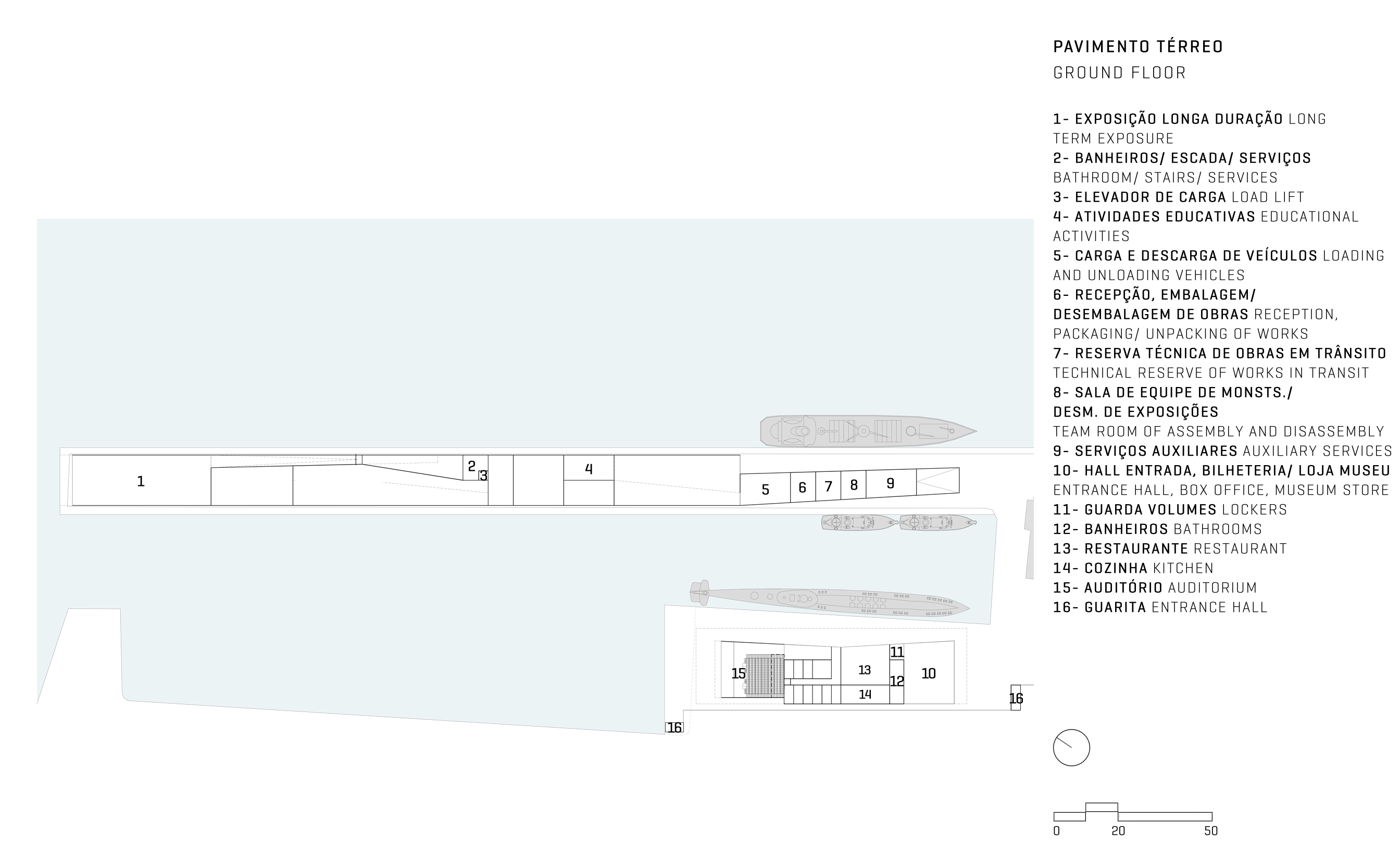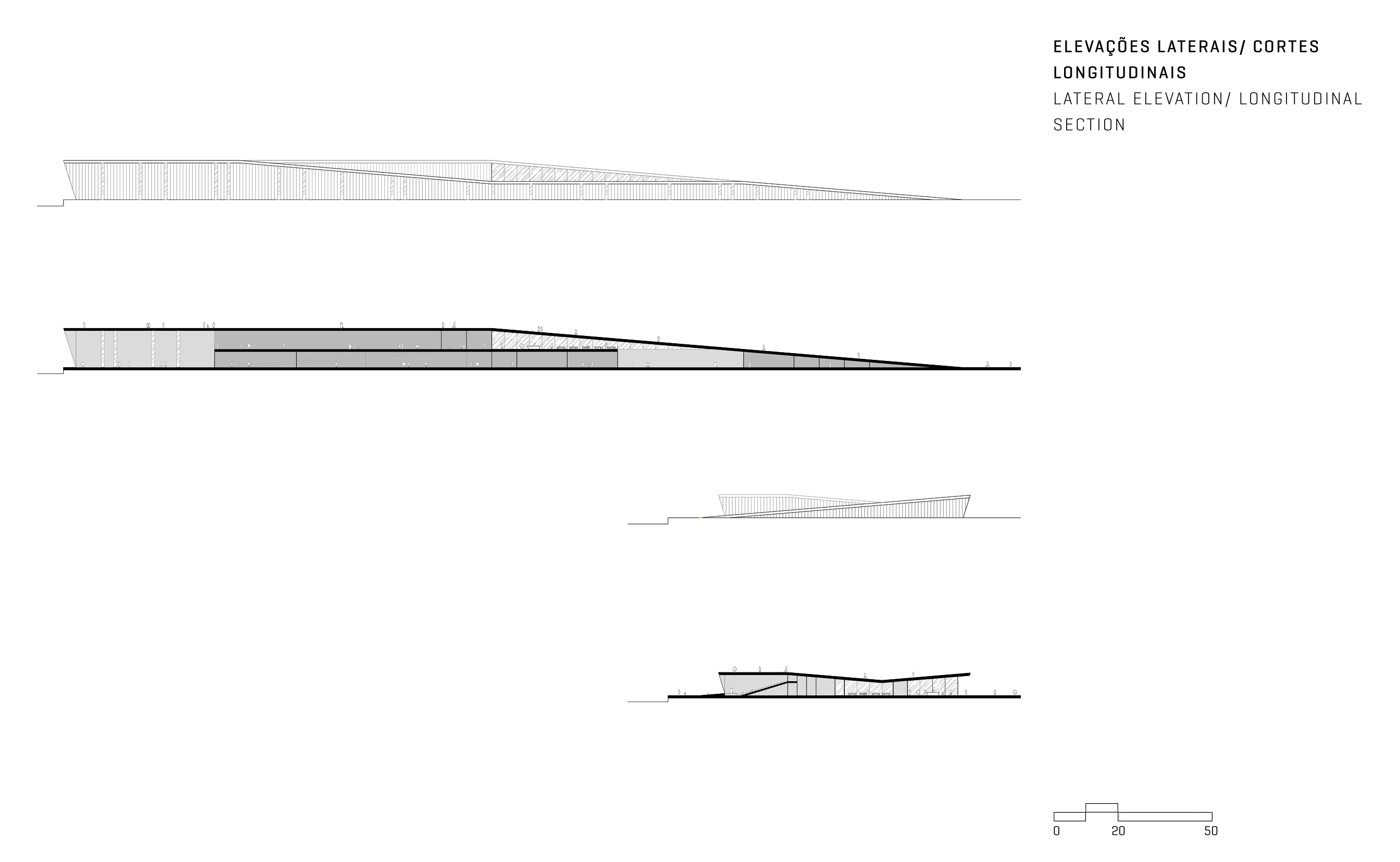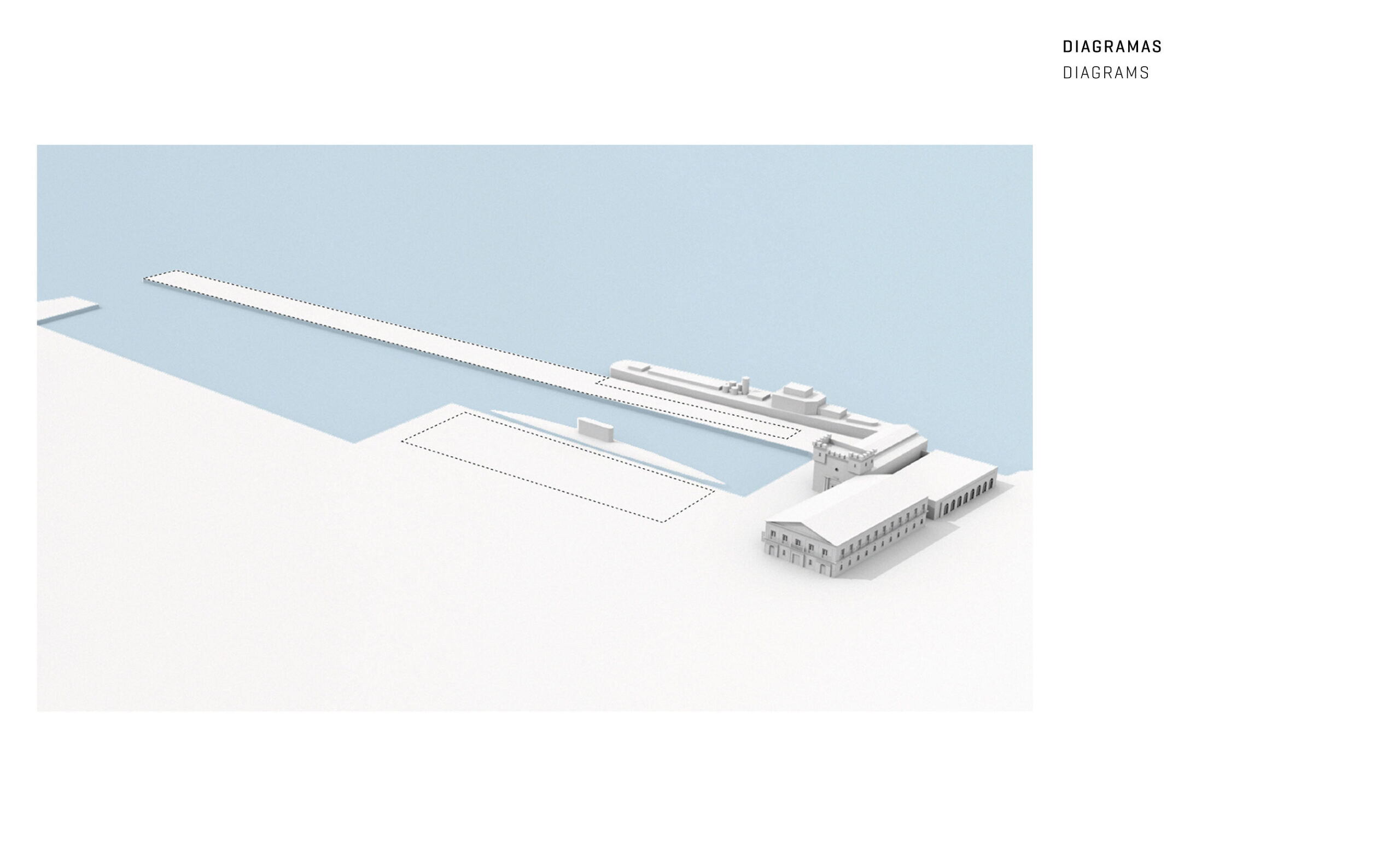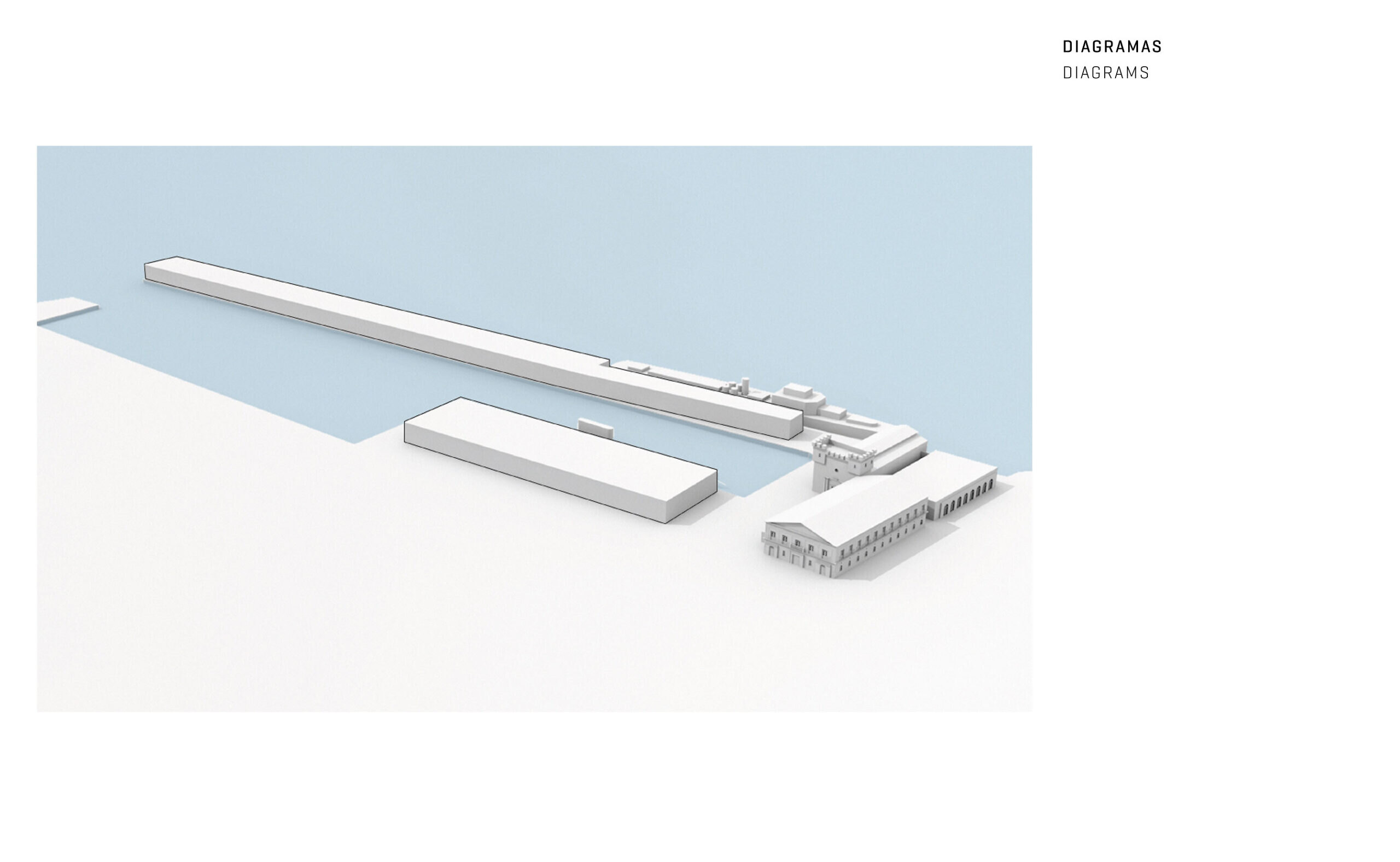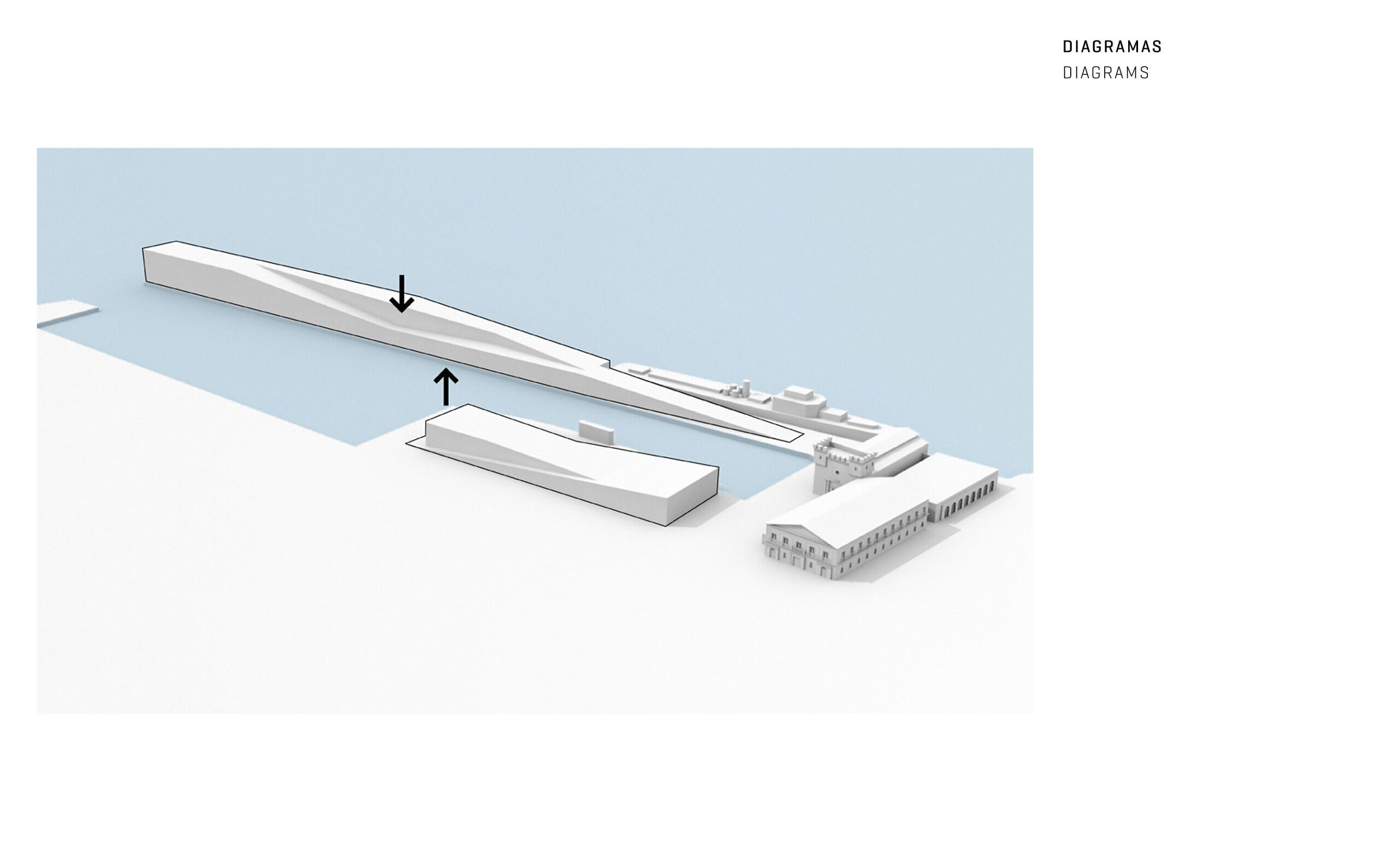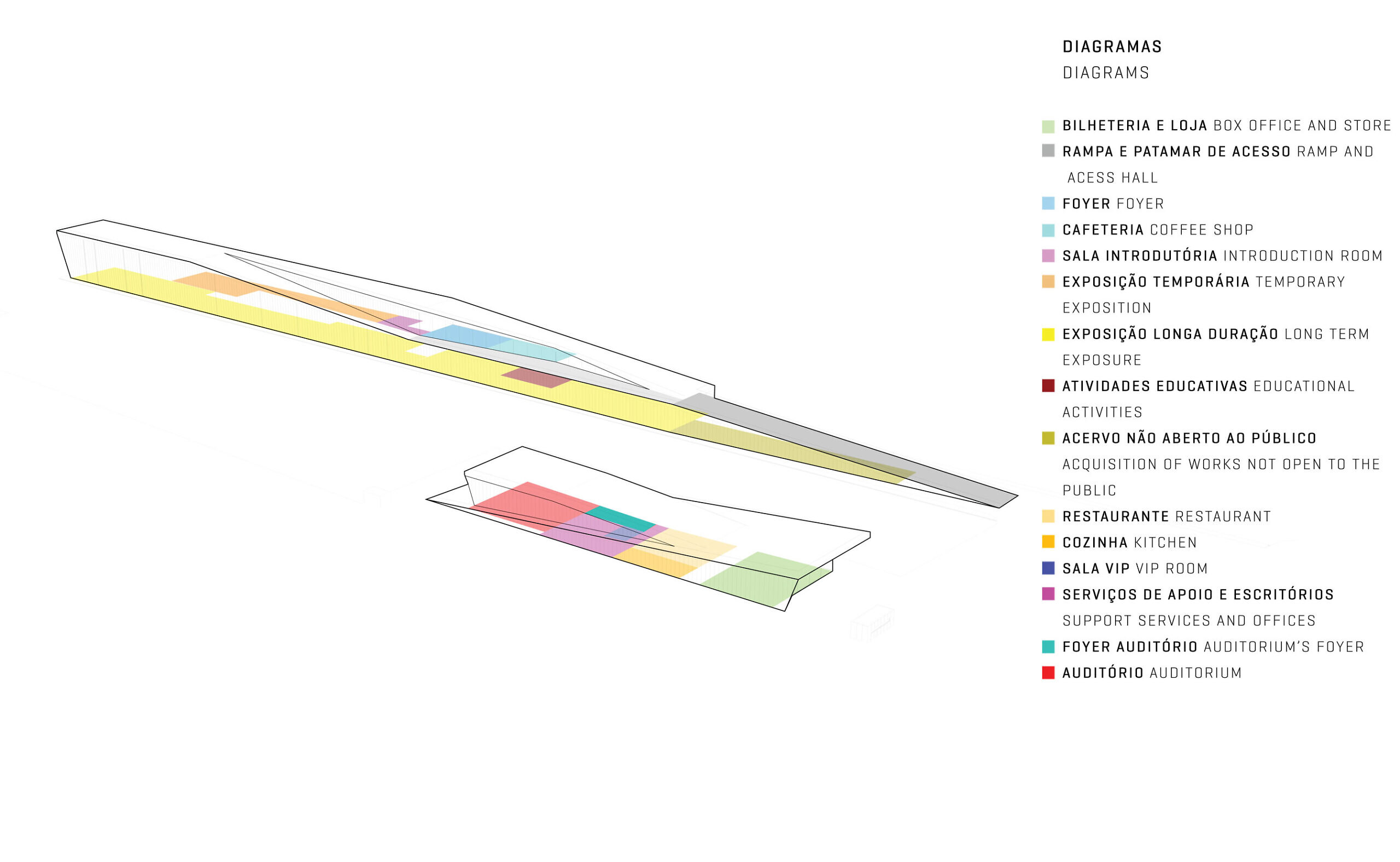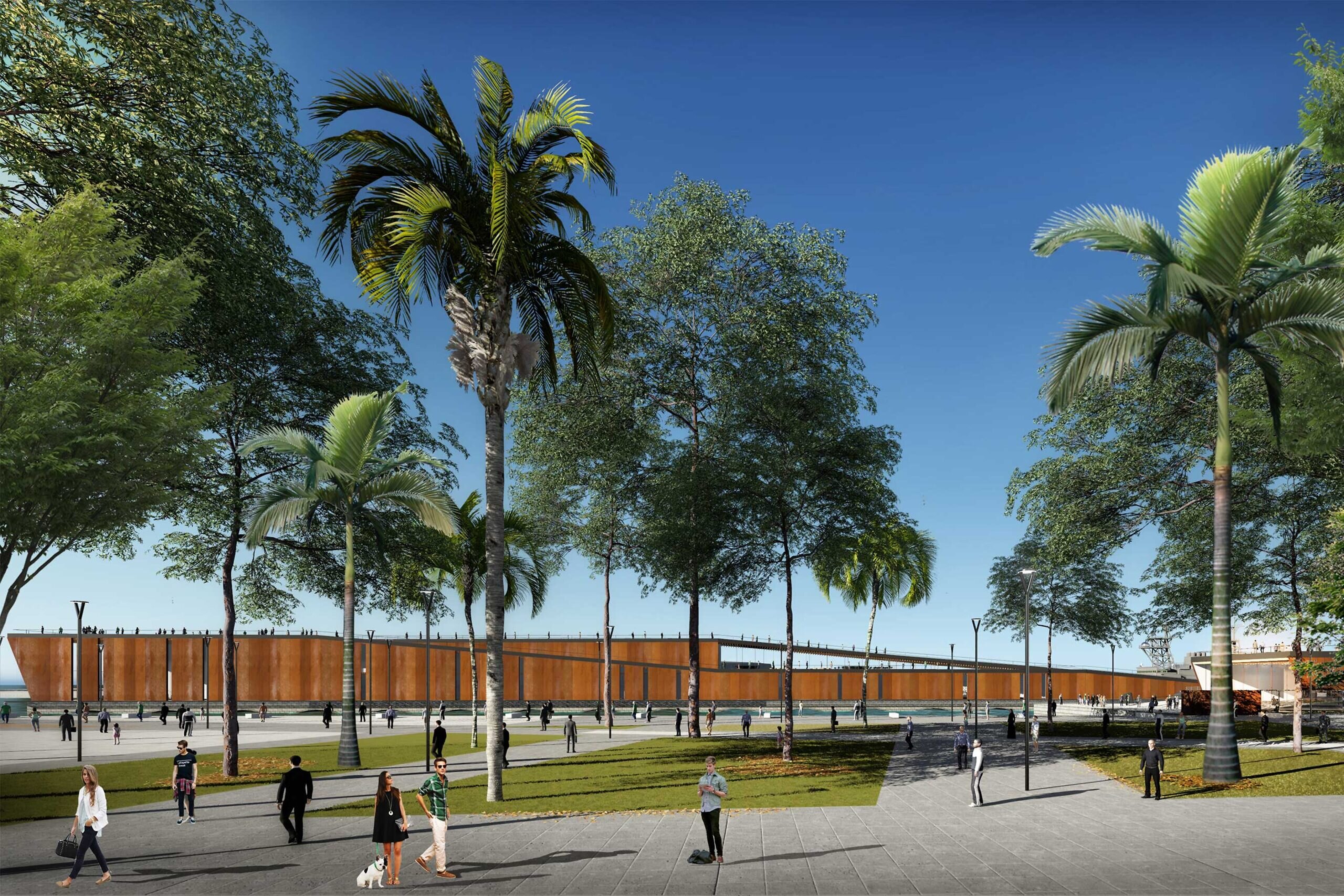
Marine Museum
Rio de Janeiro, RJ

Ficha Técnica
- Start
- 2017
- Built Area
- 6500 m²
Projeto
- Architecture
- Jacobsen Arquitetura
- Office's Team
- Paulo Jacobsen, Bernado Jacobsen, Edgar Murata, Marcelo Vessoni, Christian Rojas, Pedro Henrique Ramos, Gustavo Borges, Eduardo Aparício, Pamela Alecrim
- Interior's Team
- Tatiana Kamogawa, Daniella Gomes
The concept of the architecture project for the Maritime Museum of Brazil is based on four essential aspects:
1 – SPACIAL DINAMICS
We proposed a constant dialogue between historical, natural and urban heritages, which contemplate the Guanabara Bay, Sugarloaf, Christ the Redeemer, Fiscal Island, Candelária Church, Museum of Tomorrow, France-Brazil House and existing Navy constructions. Open for visitation, the Bauru ship and Riachuelo submarine are also part of this complex.
The programe was divided into two buildings, which rise smoothly from the ground resembling a ramp and resulting in a topographical architecture that allows visitors to have acess and make full use of the rooftop. That way we established a harmonic relationship with all the surrounding elements and enabled docking of the Laurindo Pitta museum-ship and other ships from the Navy Historical Heritage Directory.
While developing the first conceptual premise we opted for a smooth and flexible architecture. The visitation will be done through ramps with an ideal inclination for accessibility and will provide distinct views of the natural landscapes and the historical buildings. This dynamic is reinforced by a high ceiling, empty spaces on the floor and the interaction of the buildings with the external environment. The course will be unexpected like an adventure or discovery with the intention to lead the visitor to loose track of the long and narrow pier shape.

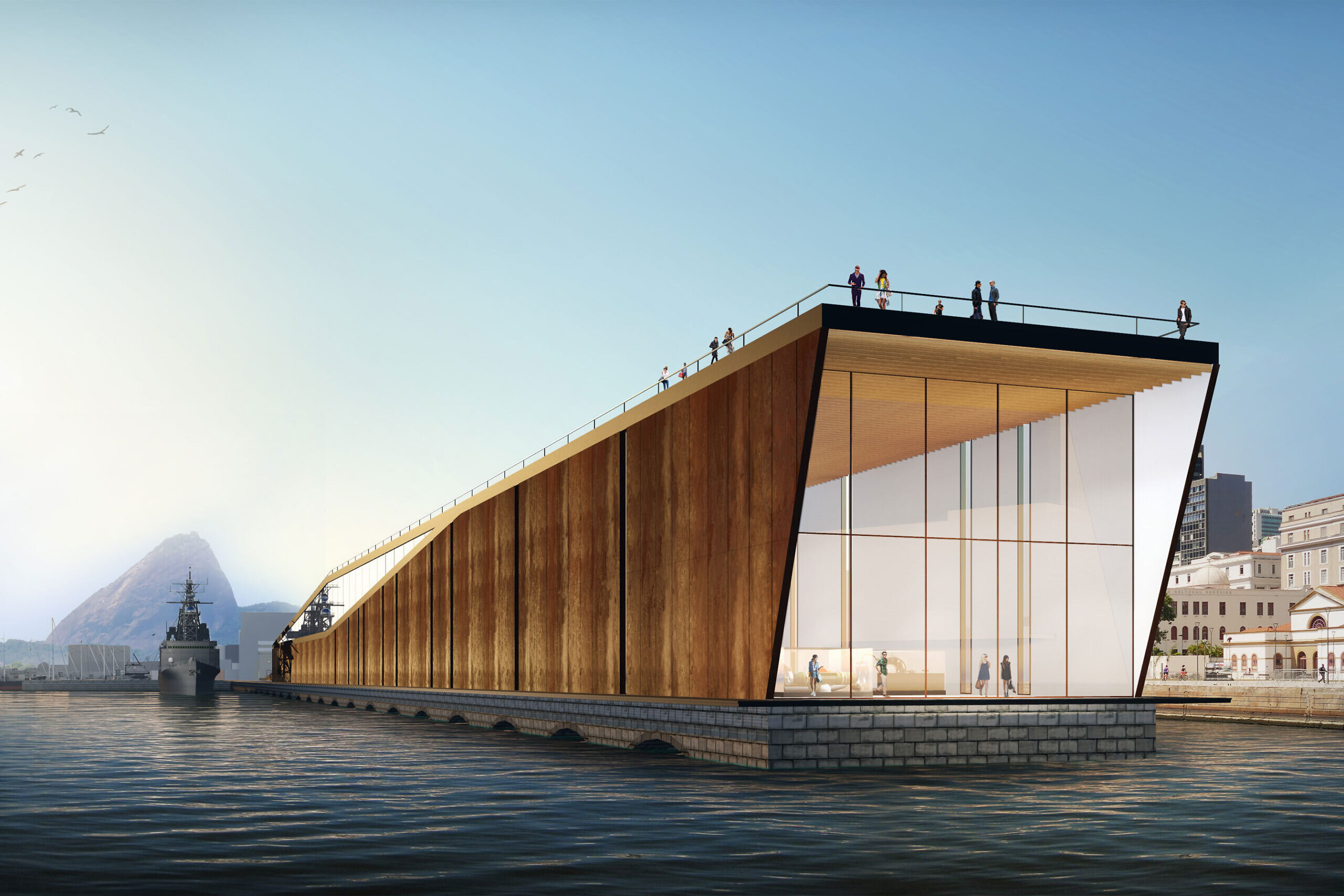
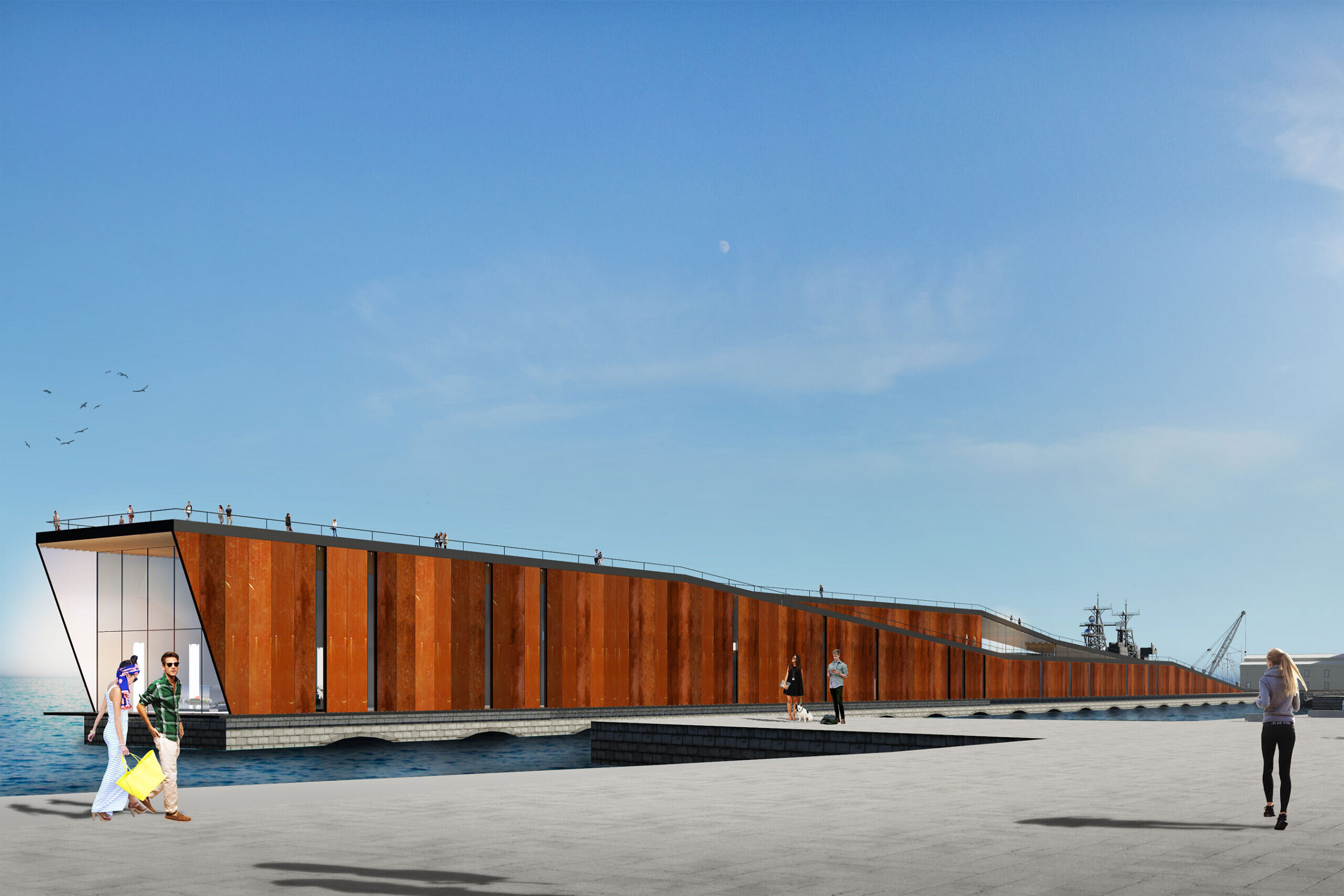
2 – FLOW
The museum program divides itself into two buildings, summing up in 6.516 square meters of built area.
The first building houses the main hall with a welcoming area, ticketing office, shops, management, restaurant and an auditorium with capacity for 180 guests. These last two mentioned areas have a privileged ocean view and can operate independently outside normal visiting hours.
The second building consist of the main museum “body”, it’s exhibition spaces as well as it’s spaces for material preparation and receiving. The access to both buildings is controlled by two security check-points direclty connected to the public route.
To enter the museum we invite the visitor for a walk, which starts at the ramp that gives access to the rooftop. This promotes the interaction of the building with the nature and city since the first moment of the visit. The entrances to the exhibitions and to the coffee shop are located exactly at the focal axis of the Candelária and the France-Brasil House. Following this ramp until the end, the visitor will find a large flat area, 12 meters above sea level, which is the buildings highest point and can be used to show Navy attractions such as the Sea King helicopter and the Rattle Snake combat vehicle.
Entering the foyer, above sea level, the visitor has the opportunity to enjoy a wide view of the Guanabara Bay, Fiscal Islands and Snake Island, seen through the buildings generous side openings. The coffee shop is located alongside the foyer and operates as a mezzanine for the exhibition area.
Following course into the museum, we find an introduction room that has the intention to mark the visitors entry, clearly letting him know that he is entering the exhibition area. Still on the same floor level, there are the temporary exhibition rooms, which open up at the end like a mezzanine for the long lasting exhibition rooms on the inferior level. Both rooms are accessed through the introduction room and a ramp. These rooms can be closed in case there is a change of exhibitions, without interfering the flow of museum visitors.
The ramp, which gives access to the long lasting exhibition room, already shows some collections pieces and surprises the visitor with the great view of the bay. Arriving on the ground floor, the visitor finds a spacious room with a 12 meter high ceiling and a generous opening, which again leads the visitor to look at the relation between Rio de Janeiro’s city and it’s nature. This large space hosts the Galeota D. João VI in a way that it can also be seen from above through the mezzanine of the temporary exhibition rooms.
Starting at this large room, the circulation through the other exhibition rooms with different heights and dimensions, will be dynamic and unpredictable. The concept of adventure and discovery will be emphasized through experiences in dark spaces, ideal for projections and through spaces with controlled artificial lighting and others with natural lighting. At the end of the visitation course is a room for educational activities. The last room has once again great dimensions, highlighting the end of the visit right in front of the Bauru Museum Ship.
Right next to this place will be the reception for exhibition material with a covered entry for large transport vehicles. This will also be the place for the maintenance department and the room for assembly and disassembly of exhibition material.
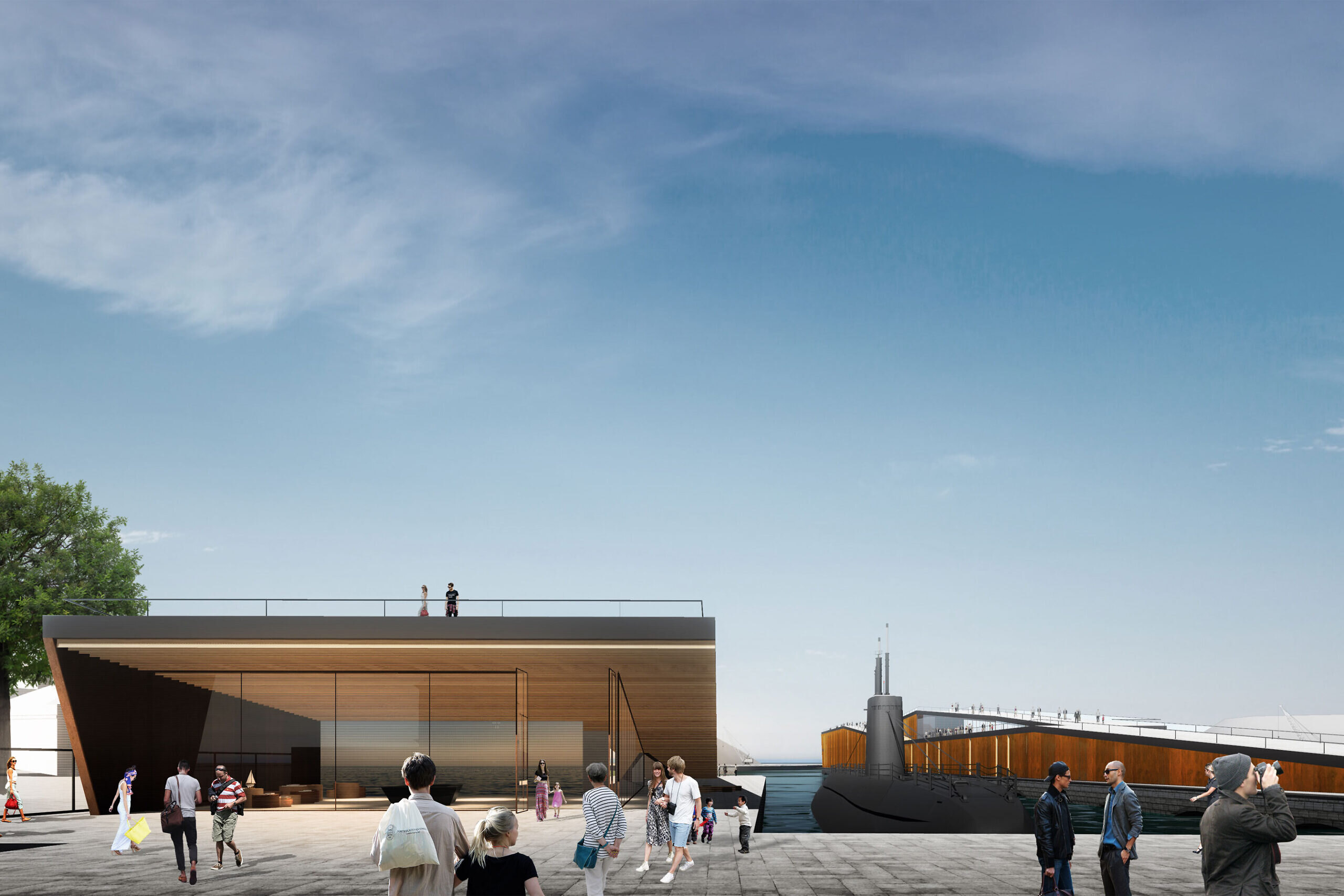
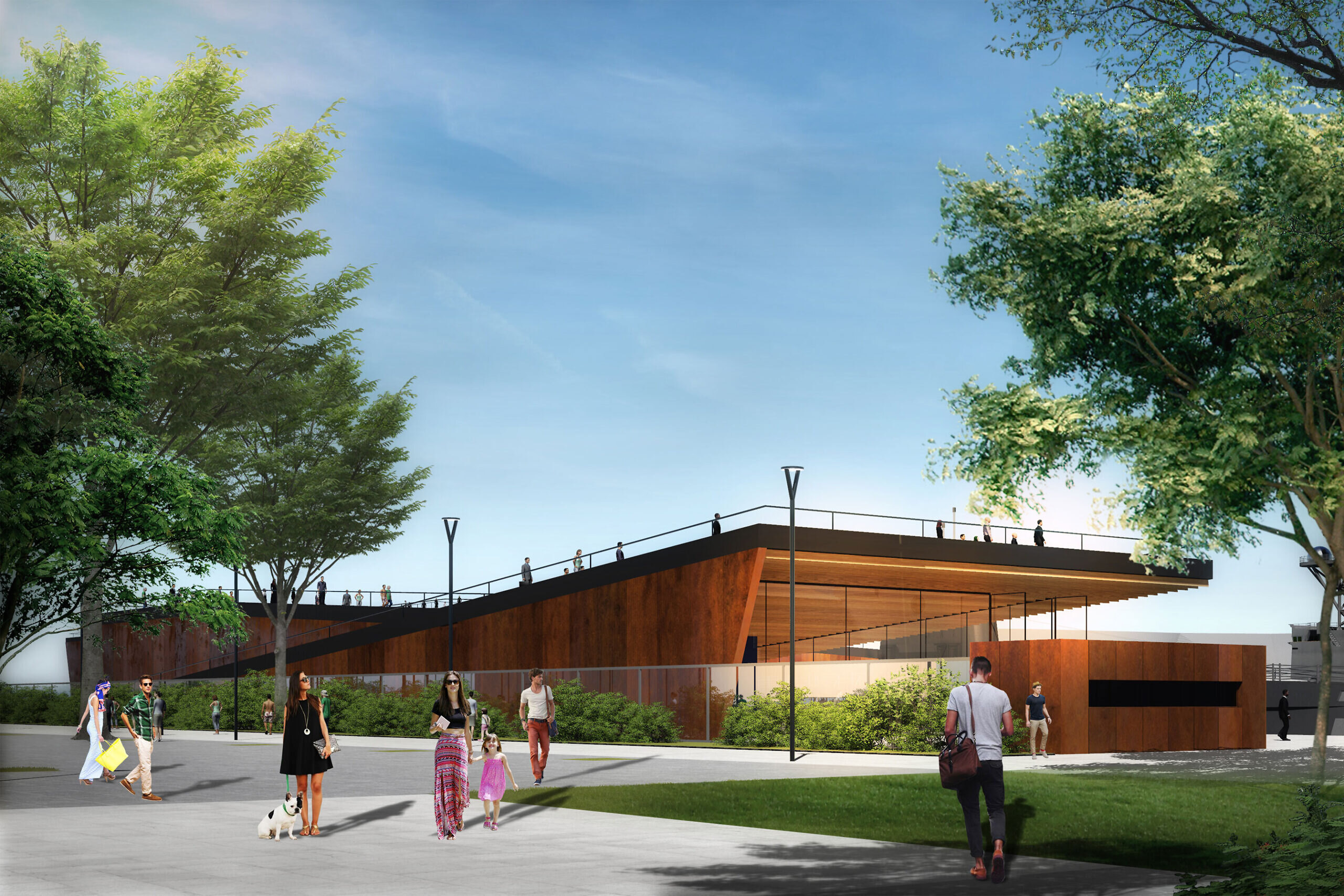
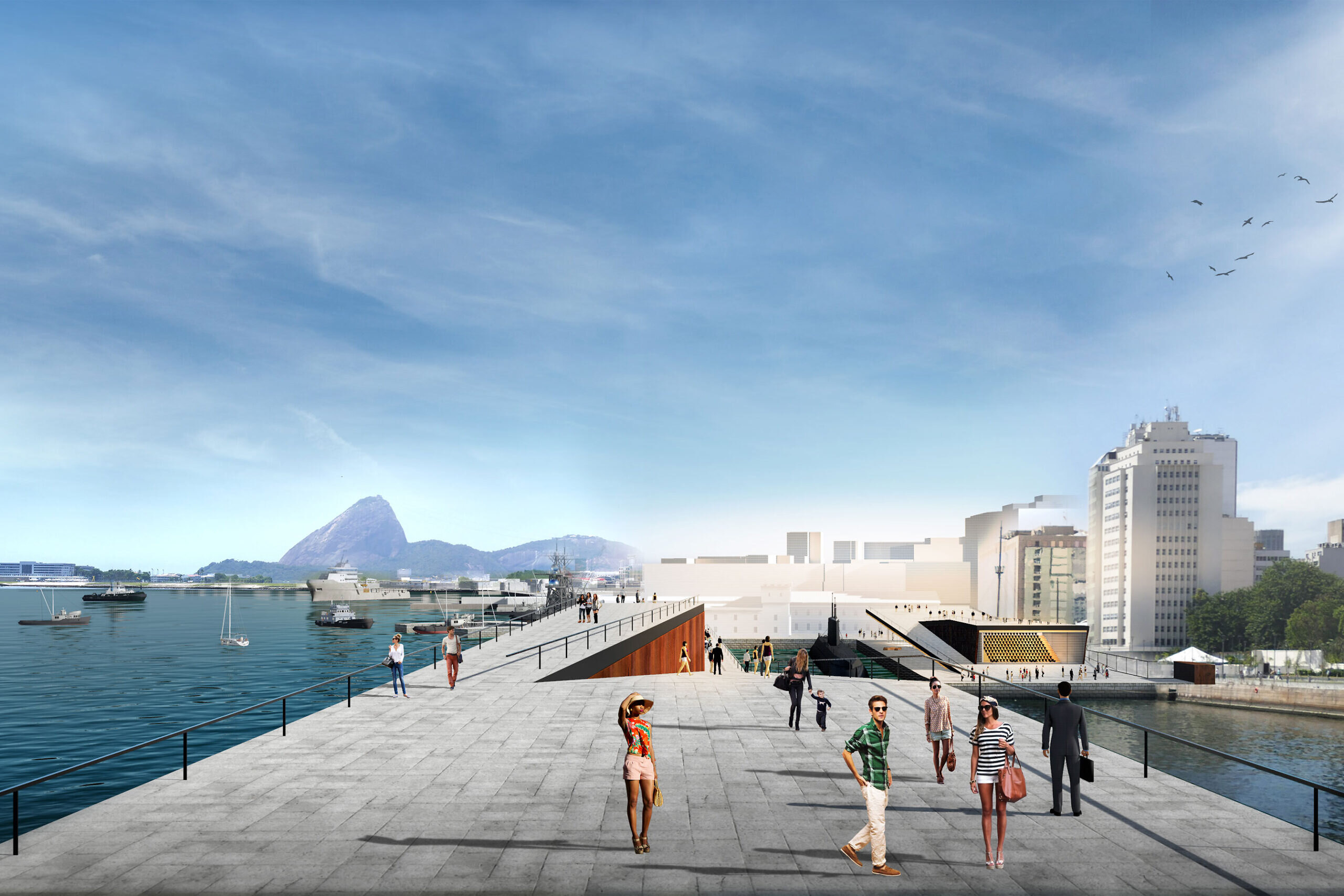
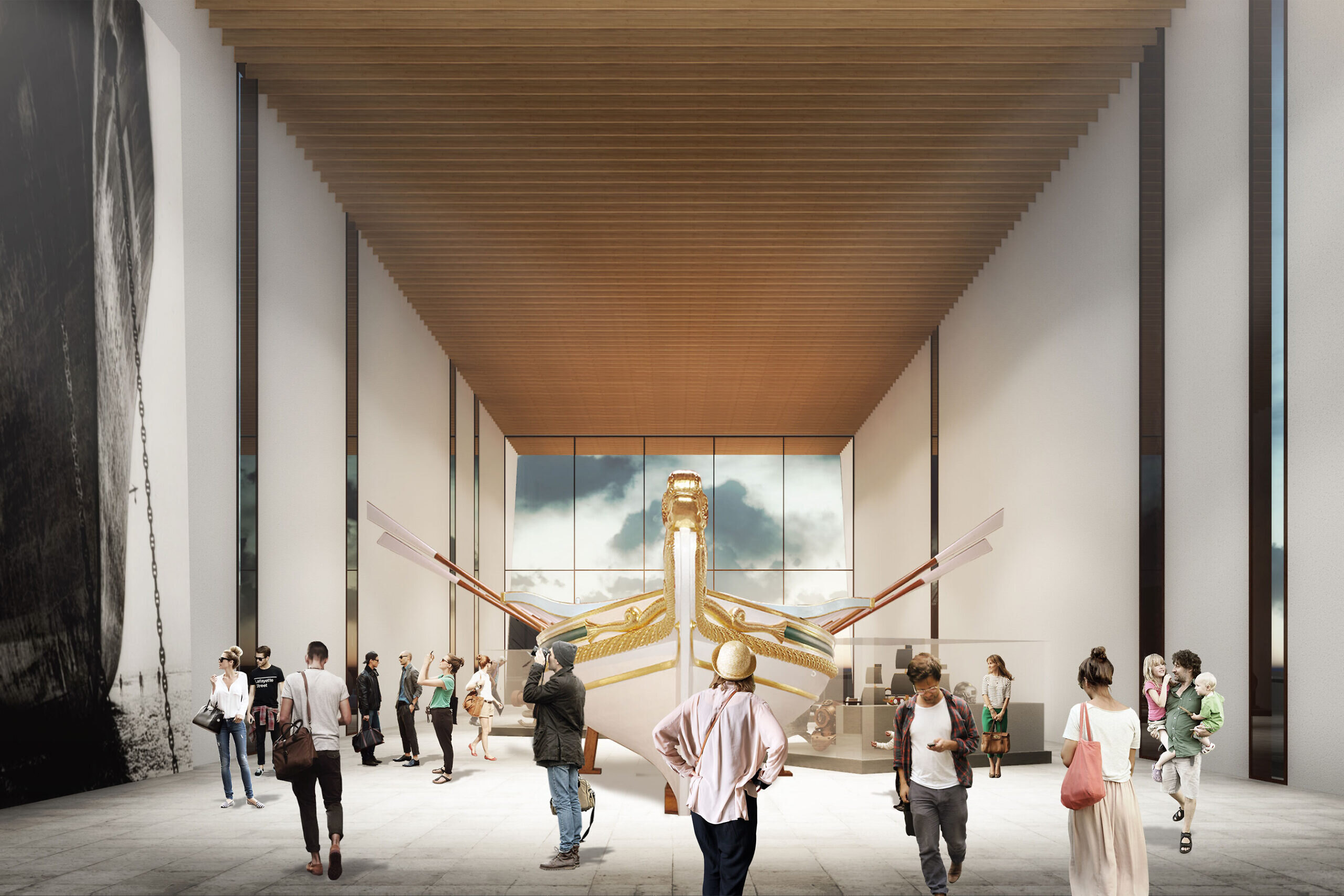
3 – CONSTRUCTION SYSTEM AND SUSTAINABILITY
The constant but controlled exposure to natural light, considerably reduces the energy consumption. Those openings were planned in a way to contribute to the thermal and environmental comfort inside the museum. In addition, the easy access to all areas of the museum and the absence of escalators also contributes to the sustainable profile of this project.
With this line of thought we opted to consider re-usable material from the Navy industry such as metal elements for the structure and closing of the construction. Having said that, our project discards the usage of expensive construction and finishing systems, which as a consequence leads to low maintenance in the long term. We considered the usage of a light metal structure to reduce the weight on top of the pier base.
In this concept we tried to reduce the usage of ceramic brick mesonry and reinforced concrete, working mostly with iron plates for the facades and plaster walls for the interior parts.
For a better maintenance of the building we added a metal platform around the pier , which also increases safety for approaching vessels.
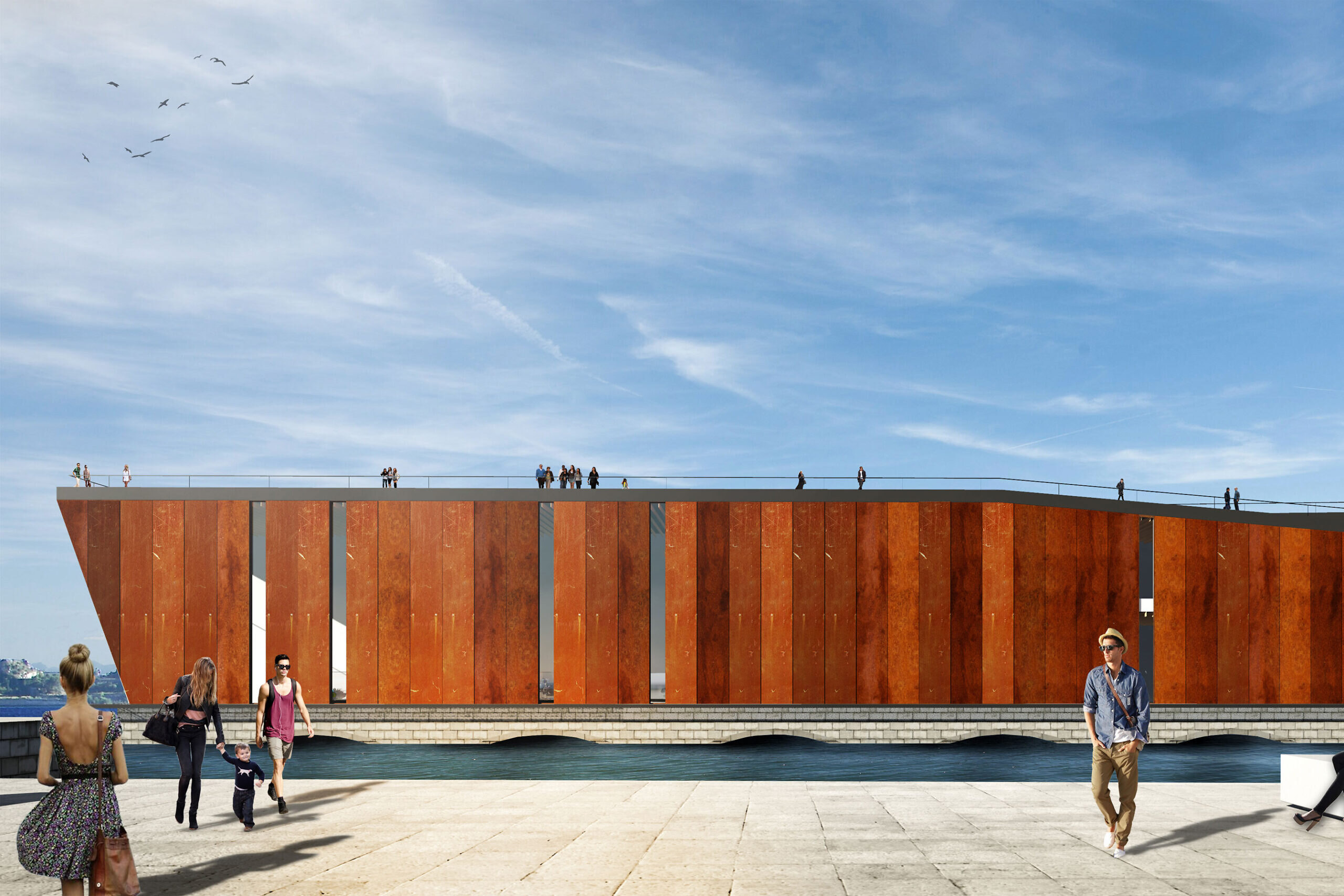
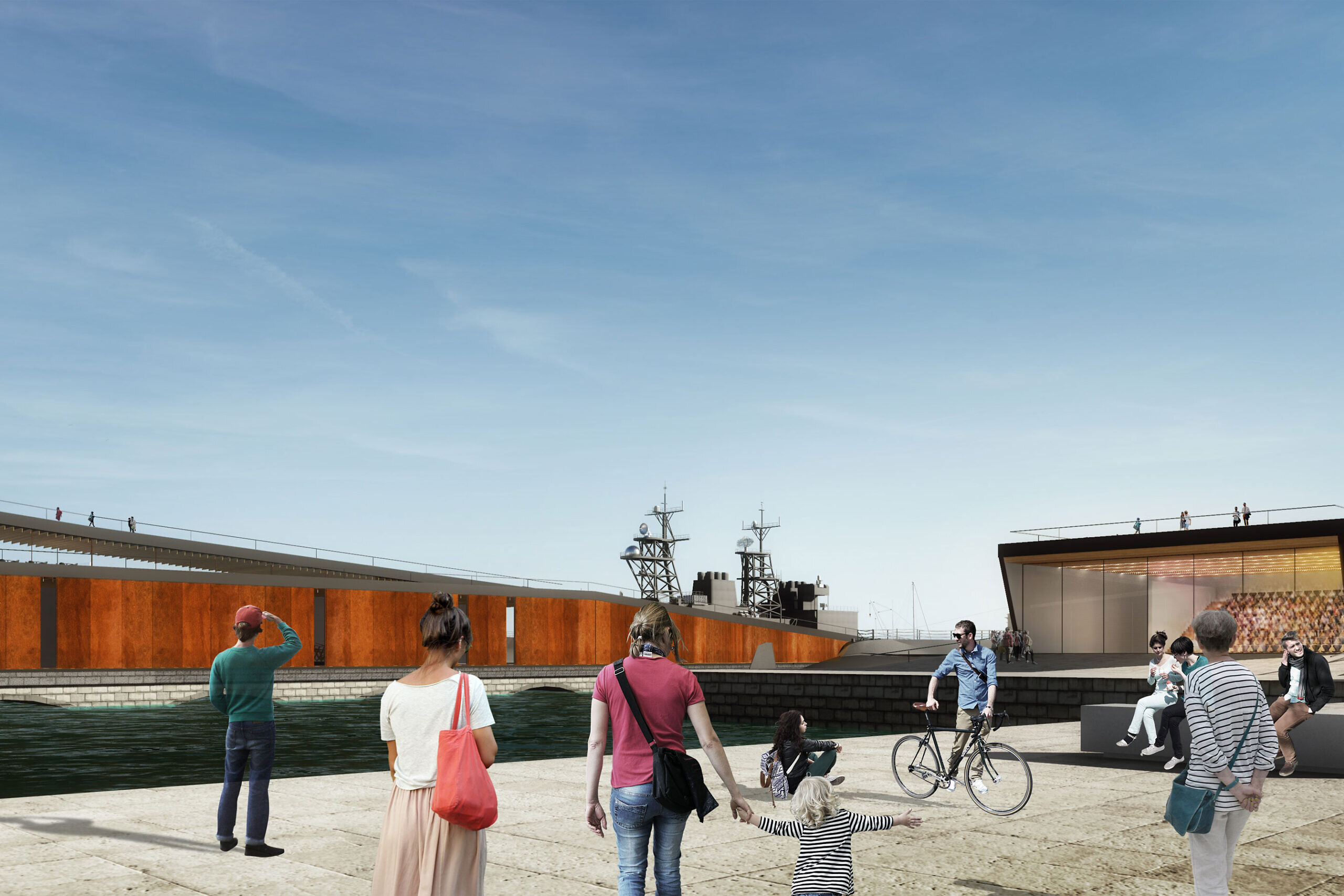
4 – ARCHITECTURAL LANDMARK
For the inclusion of the Museum in the daily routine of the city, we elaborated the buildings rooftop as an urban equipment and as an extension of the rehabilitation in the harbor area enabling its complete access, usage and occupation.
The volumetric composition of the museum tries to present itself as an extension of the city’s urban web in shape and function. Topographical dialogues with the matter of access and aesthetically promotes a harmonic relationship between the urban and natural scenario.
The main building’s volume lifts itself slightly over the water without interfering in the landscape. Due to compositional rising lines there is the discrete occupation of the urban environment enabling the experince of rising above the sea level almost feeling like immersing in the water and embarking in a maritime adventure.
The smaller building follows the same spacial language with diagonal lines that approach the floor and guarantee distance, which gives the observer the perspective of the Richuelo Museum Submarine. The non-orthogonality of the new museum’s construction differentiates it’s aesthetics from other existing buildings and therefore marks the contemporary arschitecture.
Docked at the wharf and surrounded by water, the visitor is reminded of the ancestral relationship of men and ocean as if he would be on board of a vessel. The rooftop exposes an extended view of the city while the lower levels bring in the gorgeous horizon through strategic views.
